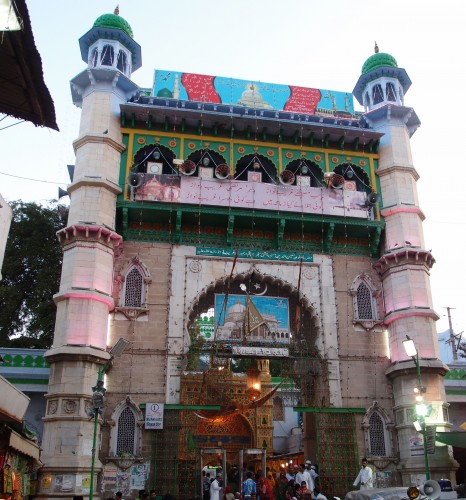Also known as the Dargah Sharif, Ajmer Sharif is perhaps the most valuable gem of the great Ajmer city of Rajasthan. Regarded as the resting place of Hazrat Khwaja Muinuddin Chishti, this mausoleum is among the most sacred sites of worship not only for the followers of Islam but also for the other religion disciples who believe the saint to be of the high spiritual character. All those who come here respectfully call the saint as ‘The Khwaja Saheb’ who is considered to be the eternal spirit of harmony as well as peace, which earns him universal reverence since his holy feet touched the powerful soil of India. Not surprising, the people from all over the world come here for fulfilling their ‘reasonable’ wishes for which the Dargah is considered to be very miraculous too.
The Ajmer Sharif is nestled at the base of the Taragarh hill (north side). Among all the different attractions surprisingly here, the prime one is certainly the mausoleum wherein there exists the tomb of the saint in the sanctum sanctorum. Okay, but before reaching here, your eyes will be lifted up automatically at different steps right from the entrance by some of the leading attractions.

You take an entry into the Ajmer Sharif via the Dargah Bazar that takes one into the inner courtyard where two big cauldrons are seen. On special days, these cauldrons are used cook ‘Kheer’ – an Indian desert of milk, rice, and sugar; which is then distributed among the pilgrims. Immediately, at the entrance, there are two giant Buland Darwaza (gate). Out of these two, the one that in the north acts now as the major entrance, which was erected in 1915 A.D. Just do not forget to take a glance atop this gateway where the prominent Naqqar (drum) Khana (house) exists along with the two pairs of giant beating drums gifted by the Emperor Akbar. These drums are not only for showcasing, they are played to accompany the music being heard at certain hours daily.
Within the Dargah, there are several charming buildings, courtyards, tombs, and Daalaans. Many of these structures are superb samples of the Mughal structural design. Look for the Akbari Masjid erected by Akbar in 1571 A.D as a roomy mosque holding the Moiniua Usmania Darul-Uloom that stands for a Persian and Arabic School whose purpose is to educate the young ones about the religion. The tomb of the Sufi Saint is decorated majestically with a surrounding silver railing as well as a marble screen partially covering it. Besides the tomb, look for a prayer room for the women devotees erected by the daughter of Shah Jahan, tomb of Saint’s daughter-Bibi Hafiz Jama, grave of Bhishti, and the grave of Shah Jahan’s daughter, Chimni Begum.
In the memory of Shree Khwaja Saheb who left his mortal body after praying for six days in seclusion; a great festival is held annually here, which is called as Urs. The festival marks these six days of prayers and is today attended by many pilgrims of any religion. One more significance of this shrine is that it is regarded as a place of wish fulfillment granted to only those who have pure mind as well as hearts while praying. As per a legend, Emperor Akbar became the father of a son after seeking the blessings from here.
Best time to visit
May because of the annual Urs festival for the great Sufi Saint; otherwise winter; kindly avoid summers as Rajasthan goes very dry and hot.
Tip
Dress fully, uphold the decorum, and cover your head
Timing
5 am to 9 pm
